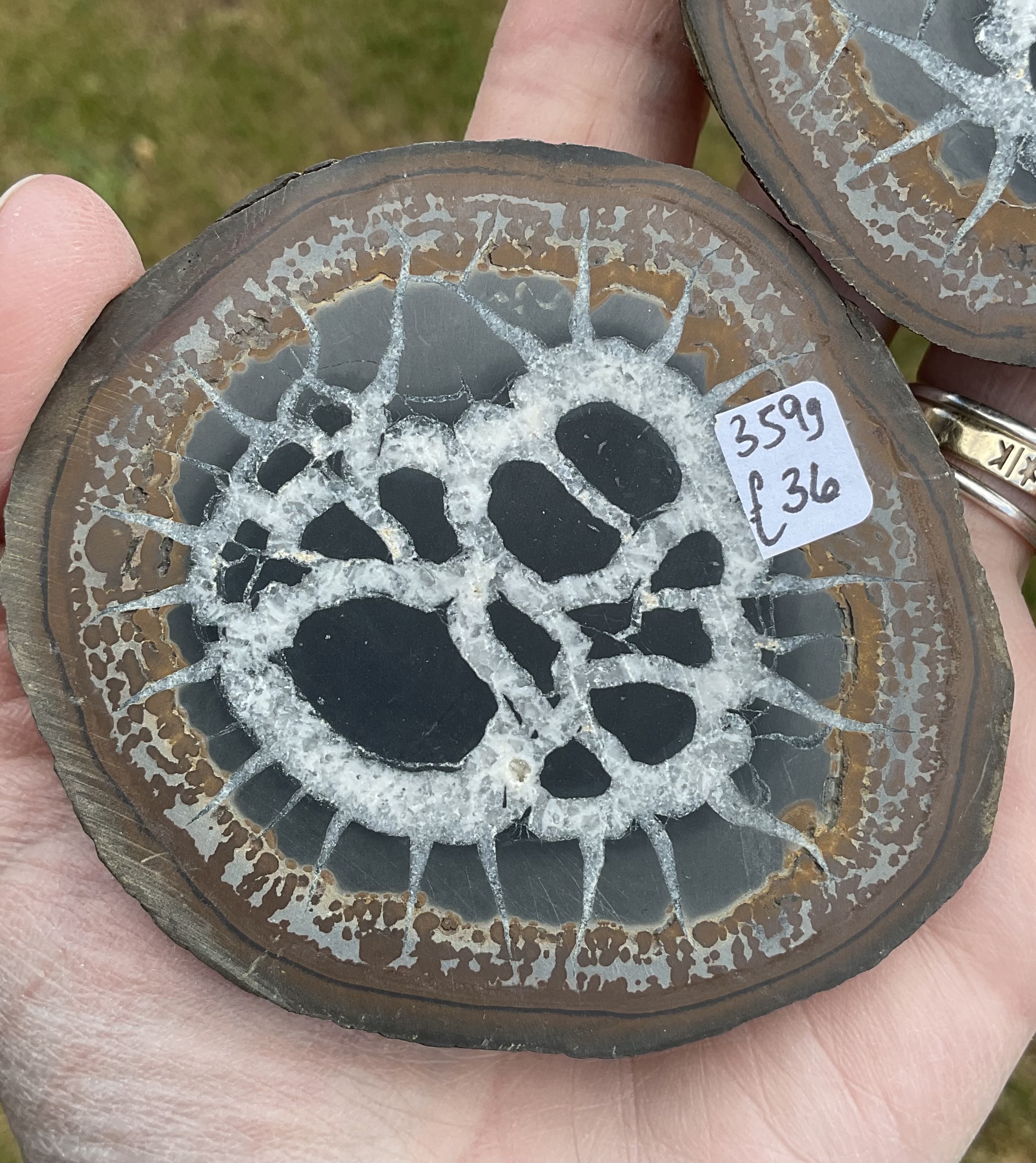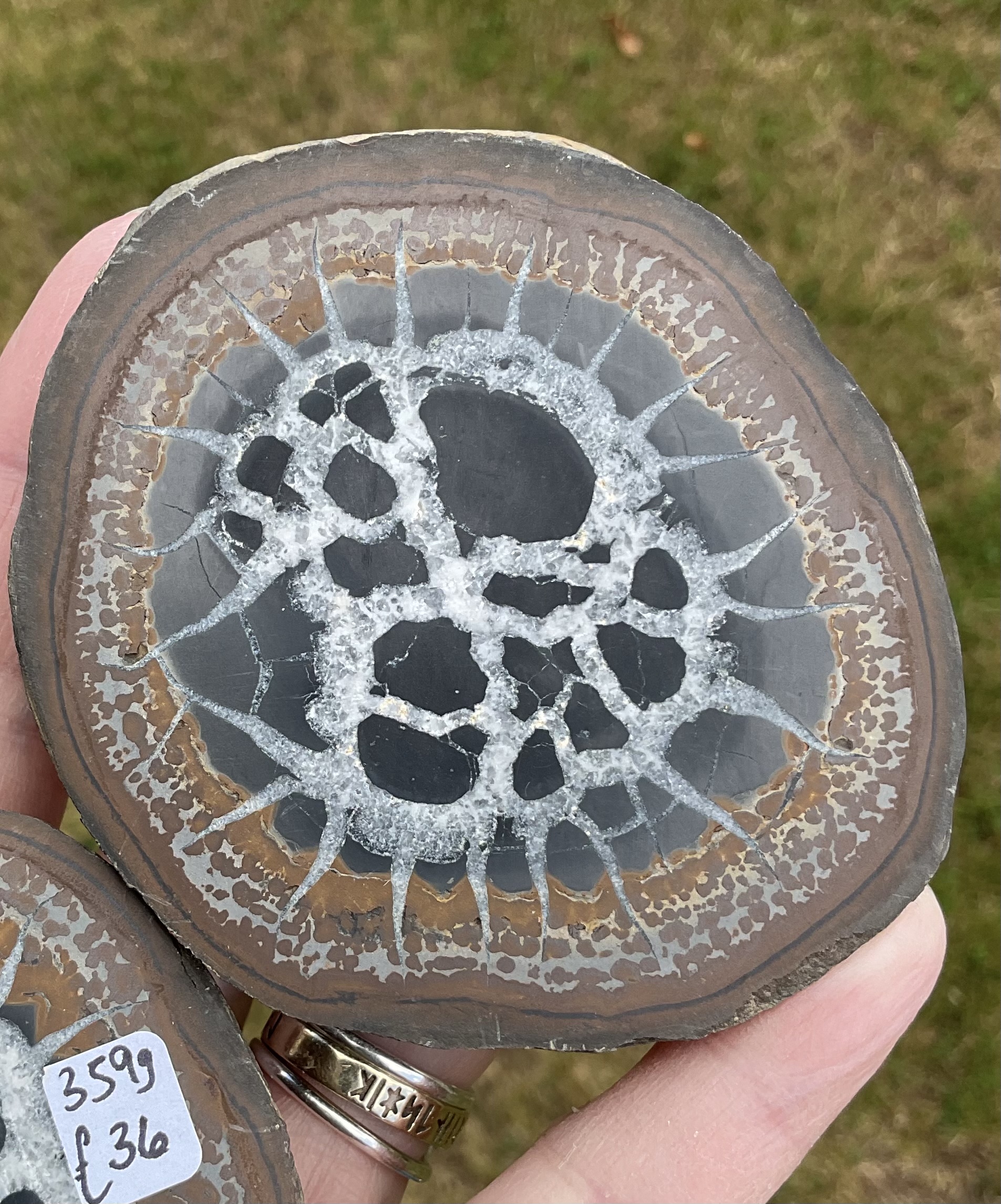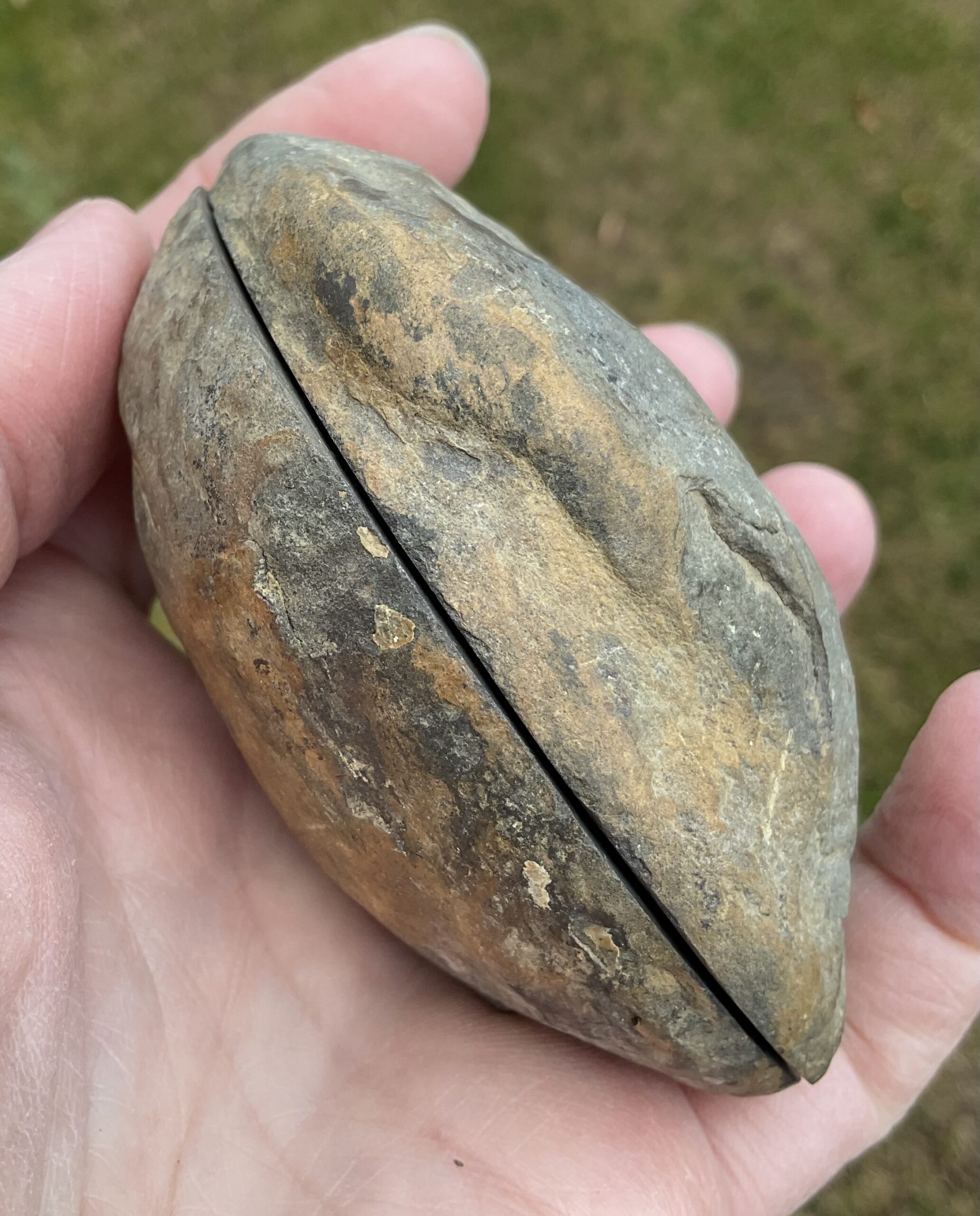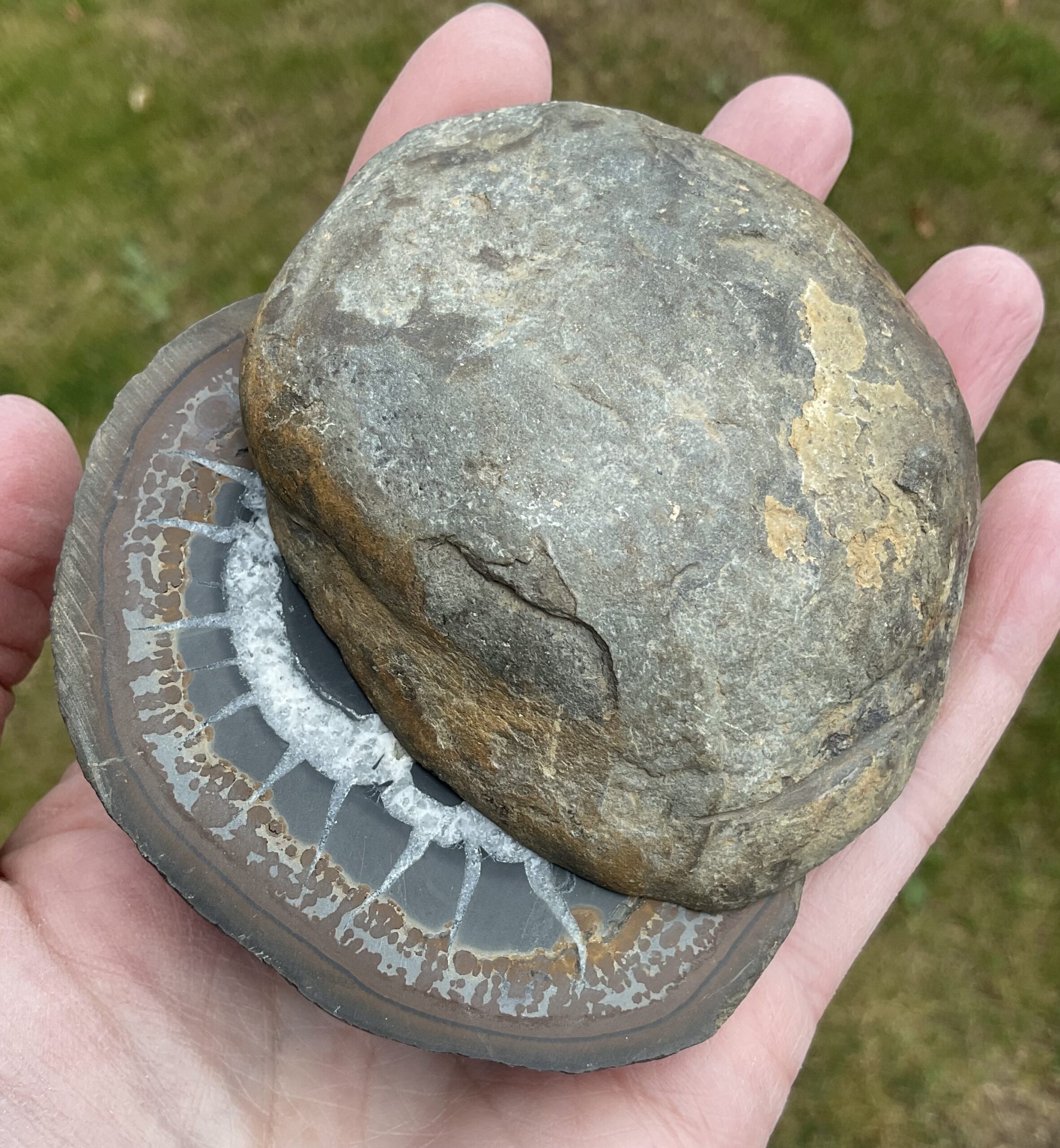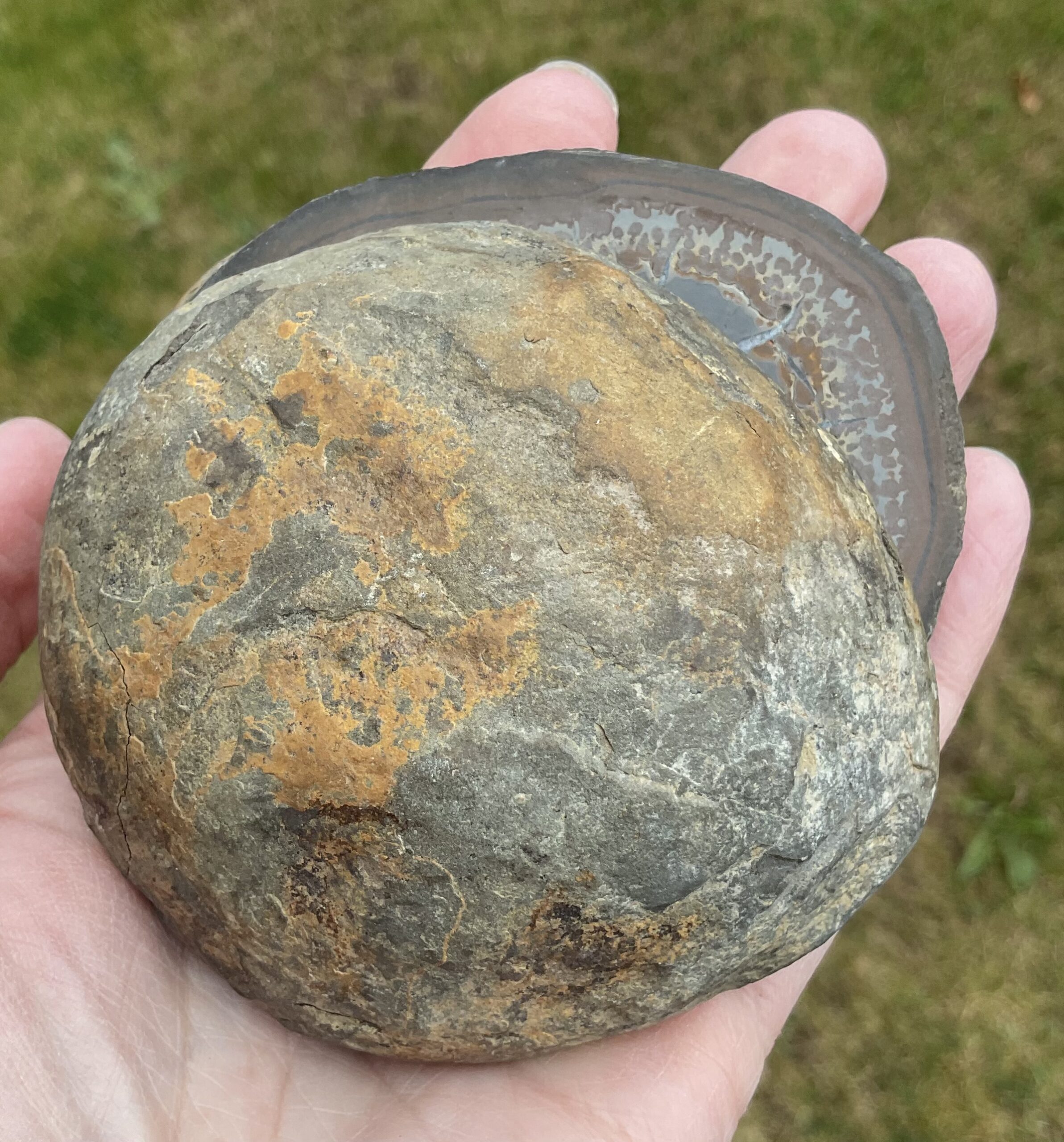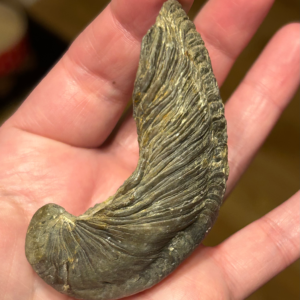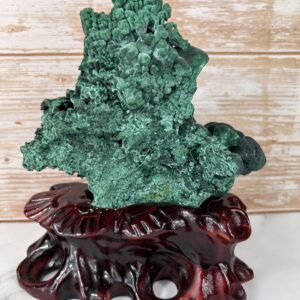Description
Weight- 359 grams
Dimensions: L- 82mm W- 70mm D- 43mm
This intriguing mineral concretion is known as a septarian nodule. Within this stone is a unique lighting bolt pattern of internal cracks filled with calcite. Also known to collectors as a “dragon’s egg geode,” these handheld formations are natural rock patterns that captivate the eye.
The unique pattern within this black mineral concretion is a one-of-a-kind geologic formation. These stones, known as septarian nodules, have been internally cracked and filled with white calcite crystal over millions of years. Geologists are unsure of the exact formation process of the cracked lightning pattern, but it is theorized that dehydration of the stone may cause it to shrink and crack.
These stones are identified by two fractures, an internal radial breakage and a concentric one appearing on the surface. The internal cracks are filled in with an outside material, oftentimes white calcite crystals. Because of these striking formations, septarian nodules are often known by more fanciful nicknames, such as the dragon’s egg geode, beetle stone, and turtle stone.
Like all concretions, septarian nodules form from sediment accumulating and cementing around a nucleus (such as a fossil), forming a rough sphere shape. Septarian nodules usually form alongside coastlines and riverbanks—it is theorized that the movement of water may aid in their formation.
This specimen is a split pair septarian nodule from Morocco.

